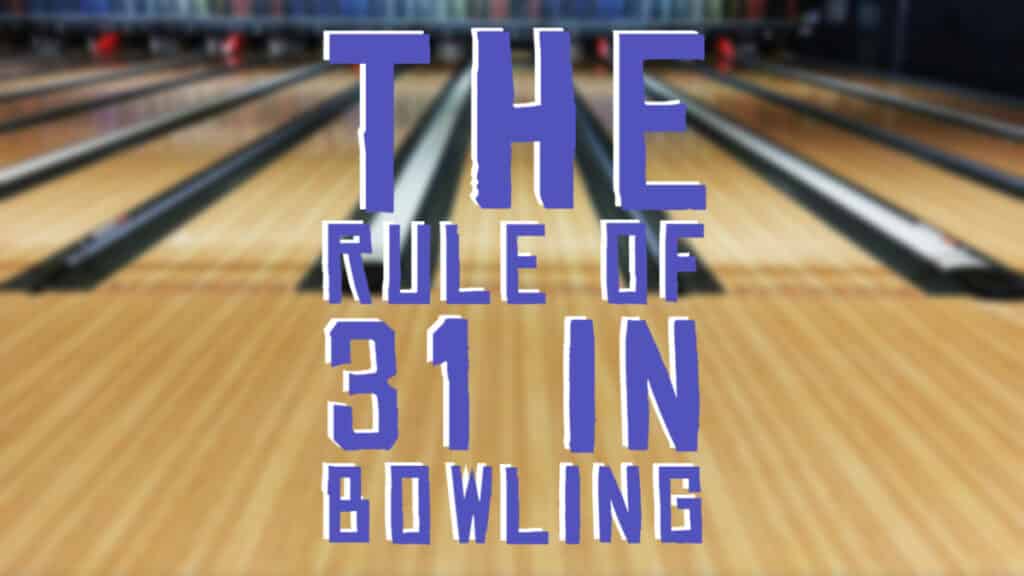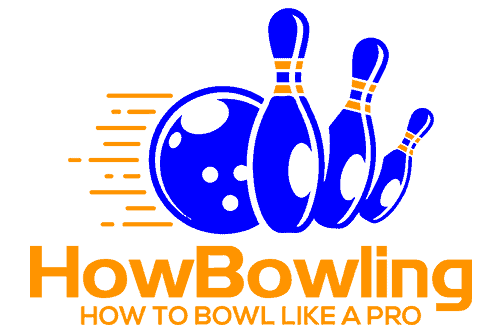Suppose you are a beginner or intermediate bowler who has mastered the basics of bowling and is ready to expand your horizons. In that case, it is time for you to understand the art of moving the ball on the oil patterns on the bowling lanes – also known as “the rule of 31”.
You might be wondering, what is this Rule of 31 in bowling, and how does it work; Well, that is what I am here to tell you.
In this article, I will talk about the Rule of 31, how it works, phases of bowling ball motion, and getting the perfect strikes. Also, learning about oil patterns that bowling centers and PBA uses and everything you need to know about oil patterns and their effect on bowling lanes.

What is the Rule of 31?
The Rule of 31 is simply an equation used to calculate the exact breakpoint where the ball must move to get the perfect hooking angle to get into the right pocket and knock down all the pins resulting in a strike.
This equation requires you to calculate the length of the oil pattern on the bowling lane and subtract it by 31, giving you the board width number that the bowling ball must contact as it exits the oil pattern on the bowling lane.
Professional bowlers in leagues and some amateur bowlers know their way around the Rule of 31 and use it to their striking advantage worldwide because of how incredibly effective it is, and you can learn to use it to get strikes as well.
Understanding the Rule of 31 in Bowling
To give you a proper understanding of how the Rule of 31 works, let me give you a case example. Let us say the oil pattern on a bowling lane in your local bowling center is 40 feet long, which is the typical length of a house oil pattern. To get a proper strike, you would subtract 40 by 31 and get 9 as a result.
This 9 is the number of the board that your bowling ball needs to move over when it exits the oil pattern known as the exit point or the breakpoint. Only then will it perfectly get into a pocket and get a strike.
Bear in mind that a bowling lane is mostly 60 feet long. So, if 40 feet is the oil pattern, then there are 20 feet still oil-less or frictional which can provide the ball with quite a bit of hooking and rolling option. So, moving over the 9th board, your ball will have 20 feet before it hits the right pocket and gets a strike.
Phases of Motion for the Bowling Ball
To control the ball using the Rule of 31, you are going to need to know about the motion of a bowling ball on the lane. Well, it is not that difficult. There are 3 phases of motion of a bowling ball. So let us take a look at them.
- Skid Phase – This is the first phase that occurs as you throw the ball. The ball is extremely fast, and the ball rolls completely straight at the angle you have chosen.
- Hook Phase – The hook phase is when the ball starts taking a turn and curving into the pocket you are aiming for.
- Roll Phase – The final phase is the roll phase resulting from the hook motion. It is the slowest in terms of speed, and the movement is angular according to the throw.
Learning to Get a Strike with the Rule of 31
With the help of proper knowledge of the bowling ball motion and the Rule of 31, you can practice your swings and finally get the perfect idea of where to throw your ball on the oil pattern of the bowling lane to get a strike. So, ultimately, you will need to get familiar with this Rule to get a perfect game ideally.
The Rule of 31 is the best-regarded, most popular mathematical equation in the bowling world, which is used by all professionals in local bowling alleys and leagues and tournaments hosted by the PBA and other high-authority governing bodies bowling associations.
What are Bowling Oil Patterns?
Oil patterns are layers of oil slathered over the lane by a machine known as the lane machine. The oil pattern on the bowling lane depends upon the volume of oil and the length of the lane that it is applied on.
Oil patterns are placed on a bowling lane to provide a skid to the bowling ball to move quickly over the 60 feet length of the bowling lane. Otherwise, the ball would lose speed before reaching the headpin at the end of the bowling lane in a game.
Length of Average House Oil Pattern
Whether it is a local bowling alley or a proper bowling tournament center, one thing that remains mostly throughout the alleys is the average house oil pattern in the bowling lanes.
Typically, in a bowling lane, you will see a long oil pattern around 40-45 feet in length, also known as the longhouse oil pattern. But one rare oil pattern is the short pattern around 30-32 feet long and is also seen applied in some bowling lanes.
Most Common Oil Pattern in Bowling Alleys
Now that we know the length of oil patterns in bowling alleys, you might be wondering what oil patterns are used mainly by local and small-time bowling alleys that are not hosting a lot of leagues and tournaments.
According to resources, most bowling alleys around the world go for house patterns that are considered bowling ball friendly. These patterns help the ball curved into the pocket to help the bowler get a strike because these alleys are meant for recreational purposes and not official games.
Hardest Oil Pattern in Bowling
According to the PBA officials, the hardest oil pattern used in bowling is the US Open pattern. This pattern is meant for tournaments and leagues held by the PBA themselves, which already tells you that it will be pretty tough.
The lane pattern is considered a flat track because of an even layer of application on all the 39 boards of the lane from the gutter to the gutter, making it extremely difficult for bowlers to get the right shot and knock all the pins down.
Every year, this pattern seems to have a few changes here and there, but the basis of the pattern remains the same. It has a length of around 40-41 feet which is quite long and makes it even harder for the bowlers to get a clean shot.
That is why it is considered the hardest oil pattern used in professional bowling tournaments worldwide and why beginners and even professionals are borderline terrified of playing on the surface with this oil pattern.
PBA Oil Patterns
House patterns or recreational patterns are limited to being applied only at local and recreational bowling centers. However, when it comes to the big leagues and tournament hosting centers, things get challenging.
The most commonly used oil pattern in the Professional Bowlers Association games and tournaments is the sports pattern, which makes the bowling lane very prone to bowler error.
The ball’s movement and the curvature need to be precisely precise; otherwise, the ball will not get the strike. This makes the margin of error little, making it one of the hardest oil patterns in professional bowling.
Can PBA Bowlers See Blue Oil?
A popular question related to oil patterns on the internet is whether newer technology allows bowlers to see the oil patterns. Well, yes! As surprising as it is, this is true.
Professional Bowlers Association unveiled this blue-tinted oil pattern at the PBA World Series of Bowling in one of their games, where you could practically see the layer of oil in blue color.
The purpose of this is to give the players an advantage and the audience immersion into the player’s world. In addition, to show them what strategies and skills the bowlers are using to get the ball to knock all the pins down. This makes the game both more exciting and more viewer-friendly.
Conclusion
The Rule of 31 has a lot to do with the oil pattern in the bowling lane you are playing on. If you know how to use the Rule of 31 to your bowling advantage, you will be able to get a strike every time.
I hope that you learned a lot from this article and that you will implement this knowledge of the Rule of 31 in your coming bowling sessions. Have a fantastic time bowling and getting great scores!




